

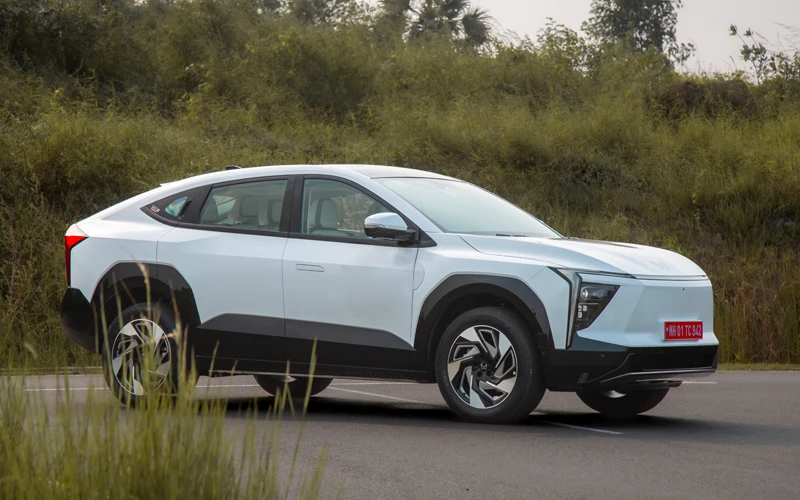
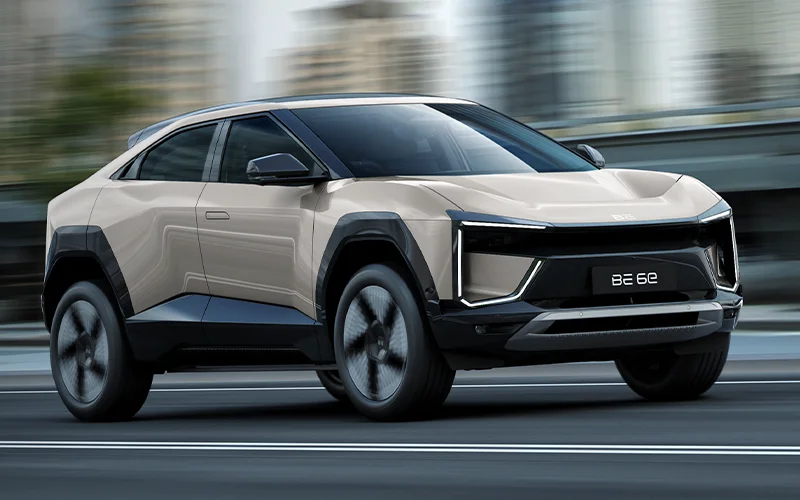
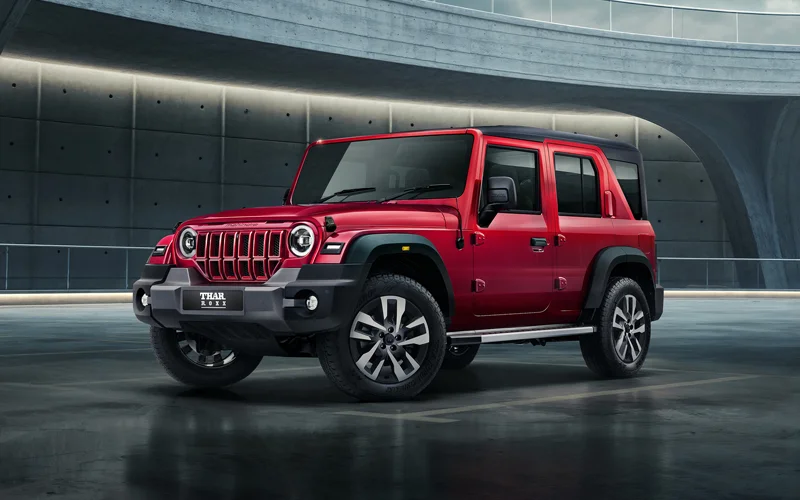

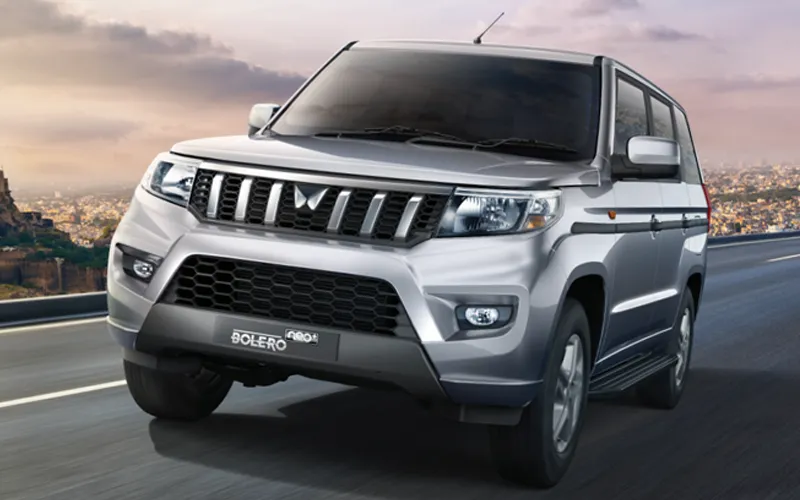

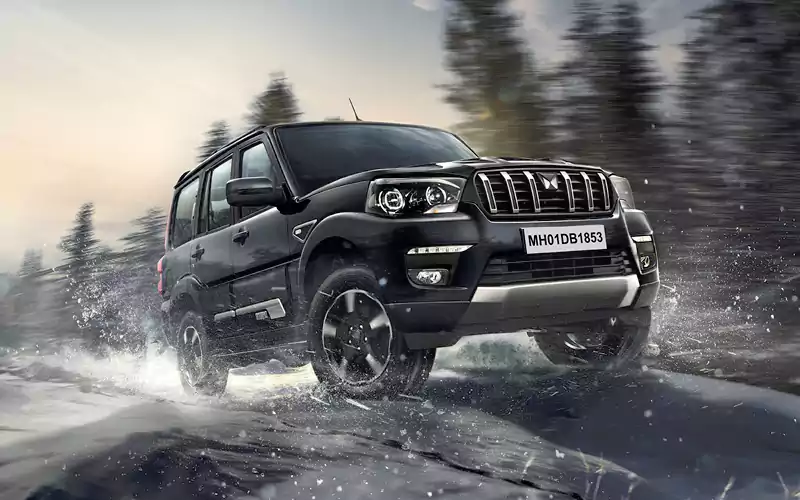
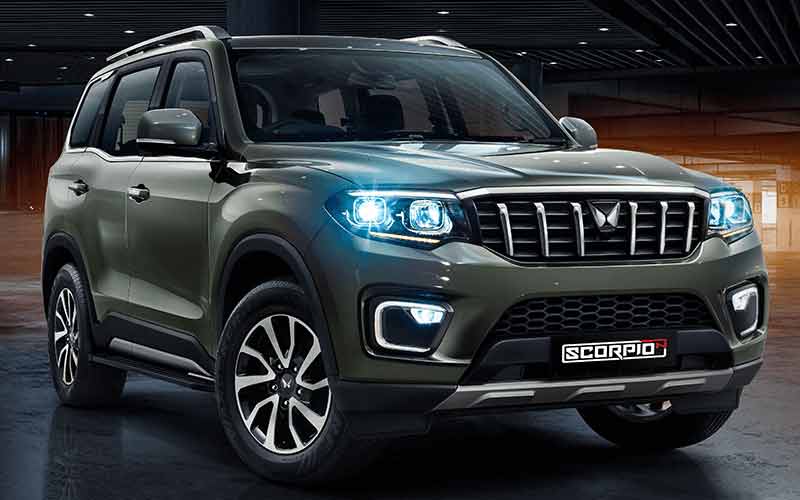
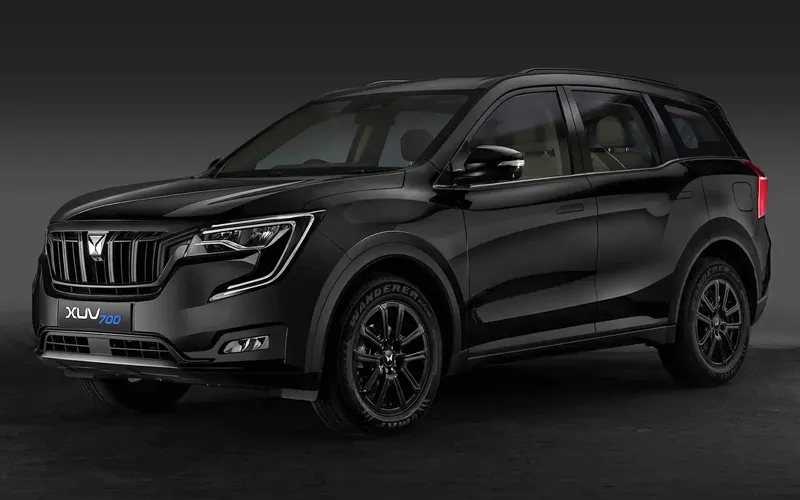




Mahindra have begun a new chapter in the Indian electric vehicle (EV) industry by introducing the 2025 XEV 9e and BE 6e electric SUVs. Priced at Rs. 21.90 lakh and Rs. 18.90 lakh (ex-showroom), respectively, the XEV 9e and BE 6e not only offer cutting-edge technology but also a few weird and whacky features. In this article, we take a look at the 20 top features of the all-new XEV 9e and BE 6e.

The new XEV 9e and BE 6e employ a new brake by wire system that Mahindra claim can apply the brakes in just 200 milliseconds compared to 400 milliseconds in a conventional ICE-powered car. The brake by wire system in the latest Mahindra EVs primarily uses the electric motor to brake and regenerate the energy. The conventional brake rotors only come into play for quick deceleration.
Mahindra claim the regenerative braking system provided by the brake by wire system helps improve the range, or efficiency, by 18% in real-word driving conditions. In essence, the regenerative braking system converts kinetic energy into electricity when you lift your foot off the accelerator. This electricity is then stored in the battery, extending the vehicle’s range.
The brake by wire technology also allows for single-pedal driving, which essentially means the driver can control both acceleration and deceleration using only the accelerator pedal.
Mahindra are calling the triple screen layout a 43.3-inch Cinemascope, but it is essentially 3 screens integrated within a single glass panel. There are some unmissable bezels between them. But the setup allows the front passenger to enjoy some videos and access vehicle details without having to lean over towards the centre. The centre screen is mainly for infotainment and some vehicle settings such as AC and mirrors. The driver’s instrument cluster is not a touchscreen and it shows mostly driver-centre features and information. The screens invading our space is a concern but for what it’s worth, this is certainly an eye-catching feature.
Even the rear seat passengers get mounting points to add a dock for mounting tables behind the front seats. You can then use these with the official accessory to bring the total count of screens in the cabin to 5. That’s an average of one per occupant.
Think of this new car as a computer. If you are more than 30 or 40 years old, then you may have seen the BIOS screen flash when turning on your computer or laptop. The BIOS or Basic Input Output System is the layer that interacts with all the hardware underneath. The BIOS also communicates with the operating system, which could be like DOS. Then, with a graphic user interface layer, you get the Windows 95, for instance. Windows 95 enables you to install applications, such as MS Word, on top of the OS layer to add functionality to the computer. These applications may perform some functions locally but they may also need to connect to the cloud for certain processing needs.
Now, let’s bring this analogy to the new-age Mahindra electric vehicles.
The hardware layer here is all the electrically or electronically operated interior and exterior features such as power seats, infotainment, interior and exterior lighting, etc. On top of this, the car has a platform software, which is the BIOS equivalent. Next, we have the middleware layer of Blackberry QNX, which would be the DOS equivalent in our analogy. Next, the Win95 equivalent layer would be the Android Automotive. Do not confuse this with Android Auto, which only works with the infotainment system. The Android Automotive is a full-blown operating system for cars and a whole lot more capable than the basic Android Auto.
Just like a typical Android Platform, their Automotive open-source platform allows developers to write applications to enhance the functionality of the vehicles. These applications can be seen as running MS Word on Windows 95. Then, the application interacts with Mahindra AI stack to determine, which tasks it can perform locally and which ones need the cloud processing. For that, they have the cloud infrastructure.
All of this runs on the Qualcomm Snapdragon Cockpit SoC, which houses CPU, GPU and NPU, enabling Mahindra to offer some local AI capabilities. All of this is top-of-the-line equipment and software and this kind of a hardware and software stack is seen for the first time on a car in India. And this, ladies and gentlemen, is what we call a software-defined vehicle or an SDV.
The SDV architecture allows the manufacturer to improve the vehicle through future software updates. When even the suspension, braking and ADAS fall under the scope of OTA (over-the-air updates). And with the Android Automotive platform, we can expect the developer community to build applications for the AA-compatible cars. As a customer, you can just install these apps and gain new functionalities even without the manufacturer intervention.
Mahindra are offering the top variants of the XEV 9e and BE 6e with a 1400W, 15-channel amp, 16-speaker Harman Kardon audio system with tuning from Dolby Atmos as well as Harman’s QuantumLogic Immersive. The 16-speaker sound system consists of 4 tweeters (1 in each door), 4 low frequency woofers (1 in each door), 1 subwoofer, and 7 mid frequency speakers (1 in dashboard, 2 in front doors, 2 under front seats, 2 in boot). The sound system also comes with Harman’s QuantumLogic Immersive (QLI) tech for an experience that’s, reportedly, better than surround sound.
Leveraging the software-defined architecture of their latest EVs, Mahindra just added some acoustic disco light feature, which can turn any place into a disc. With an impressive sound system, you may keep looking for places and opportunities to jam with the doors open.
The higher variants of both the XEV 9e and BE 6e come with a fixed glass roof. However, what sets the glass roof in the latest Mahindra EVs over others is the integrated ambient lighting. Mahindra say the ambient lights in the glass roof can change its intensity and colour based on speed and other driving parameters.
Both the XEV 9e and BE 6e come with a top-notch head-up display (HUD) that offers all the vital information at the driver’s eye level. Mahindra say the HUD in the XEV 9e and BE 6e are designed to offer the impression of the data being projected 10 metres ahead of the driver across a 75-inch screen. The actual HUD screen is much smaller.
The HUD offers information such as speed, range, active ADAS features and navigation cues. However, the best part of the VisionX HUD is the fact that it automatically adjusts the angle of display by using your head and eye position via a camera mounted on the roofliner. With this feature, the information is always visible in crisp form on the windshield regardless of the driver’s eye position. Check out the pros and cons of a head-up display by tapping the link below:
Head-Up Display (HUD) - Detailed Feature Explained
Both the Mahindra XEV 9e and BE 6e are equipped with Level-2 ADAS features. While ADAS is now available on cars from the B2 segment onwards, what makes the XEV 9e and BE 6e’s ADAS stand out is its hardware and software package.
Earlier in January 2024, Mobileye, a leading innovator in autonomous vehicle technology, and Mahindra announced an expanded partnership to accelerate the development of ADAS and autonomous driving solutions.
As part of the strategic collaboration, Mahindra are leveraging Mobileye’s cutting-edge EyeQ6 system-on-chip and advanced sensing and mapping software to offer Level-2 ADAS on the XEV 9e and BE 6e. The ADAS kit in the latest Mahindra EVs comprises 4 cameras (one on each side), 5 radars (one on each corner and one in front) and 12 parking sensors (6 on each bumper) to offer enhanced safety, comfort and convenience features.
Meanwhile, the biggest advance Tata Motors are making in safety with their Sierra EV is offering 3 front and 3 rear parking sensors. We can just wish Tata luck in their attempts to catch up with Mahindra’s EVs!
Mahindra’s latest electric SUVs get a new facial recognition system called EyeDentity that automatically adjusts vehicle settings based on the driver. Mahindra say the system not only adjusts vehicle parameters to specific drivers such as sound, auto AC, mirrors and seat settings but also the cabin camera for video calls. This makes the memory seat feature appear archaic in comparison. The system also offers driver drowsiness detection and nudges the driver to take a break if it detects driver fatigue.
The XEV 9e and BE 6e also offer a live security function called Secure 360 that uses 5 camera (4 exterior, 1 interior) that alerts the owner with a live video feed if someone approaches or attempts to break into the car. The Secure 360 feature is accessed via the driver’s smartphone, allowing them to keep an eye on the car if and when required.
While auto park isn’t a ground-breaking feature by any means, Mahindra’s auto park feature on the XEV 9e and BE 6e is capable of detecting a wide and safe enough parking spot by itself or allow the user to select an available parking spot. Mahindra say the auto park feature in the XEV 9e and BE 6e is tuned for 200+ use case scenarios and is accessible via the car’s key fob.
While most cars require the driver to be present inside the car for the auto park feature to work, Mahindra’s auto park system can park the XEV 9e or BE 6e. If you find a space where the car can fit, then just point the car to park itself in that space and it’ll head into that spot. You don’t even need to be in the car. All of its cameras, radars and sensors will help it navigate into the parking spot.
Mahindra have equipped both the XEV 9e and BE 6e with UV filtering glass for the front and rear windshields, roof glass and all 4 windows. Apart from filtering 99.5% of UV rays in the 200-400nm spectrum, the UV filtering glass also helps cool the cabin faster. A faster and more efficient cooling system aids in improving the driving range as the AC requires less energy to cool the cabin, reducing the overall energy drain on the battery. A faster AC can also reach the desired temperature more quickly, minimising the time spent with the AC running at full capacity.
Another feature highlight of the 2025 XEV 9e and BE 6e are their variable ratio steering. Variable ratio steering is a technology that progressively gets sharper so that you can fine tune your inputs at high speeds but you don't have to rotate it a lot at low, parking speeds to make a full turn. Thanks to this tech, both Mahindra electric SUVs offer a segment-defying turning radius of 5 metres.
From lock to lock, it rotates about 450 degrees. That’s just 225 degrees from the centre. So, you don’t even have to turn it around once to make a tight turn from the centre position.
The XEV 9e and BE 6e come with all independent suspension with semi-active damping for improved ride quality and handling. In an all-independent suspension system, each wheel moves independently, offering a smoother ride, better cornering ability, reduced body roll, and improved steering precision.
Semi-active damping, on the other hand, is a technology used in automotive suspension systems that allows for dynamic adjustment of shock absorber stiffness. Unlike passive systems, which have a fixed damping rate, semi-active systems can vary their damping force in real-time, based on road conditions and vehicle dynamics. This adaptability significantly improves ride comfort, handling and overall vehicle performance.
The new Mahindra EVs also come with a paw-friendly, which helps maintain the cabin temperature and ventilation for your 4-legged friend. During this time, the vehicle doesn’t need to be ready to move. If you have to step out of the car and you can’t take your furry friend with you, the car can keep your friend comfortable while also securing it from theft.
The 79kWh variants of the XEV 9e and BE 6e can accelerate from standstill to 100kmph in 6.7-6.8 seconds flat. While all variants of the car get 380Nm of torque, only the 79kWh variants of the new Mahindra EVs will get the higher power output of 286PS, which comes from revving the guts out of the motor. Well, it does consume a **** tonne of battery if you are flooring the pedal every time to cross a traffic light but it is an experience that no other car under Rs. 50.0 lakh, and probably even under Rs. 60.0 lakh (ex-showroom), can provide. And we can rest assured that the Mahindra EVs will manage to easily undercut them while offering a crazy good acceleration.
The large 79kWh battery pack and 175kW DC fast charging option offers multiple benefits to the end user. The large battery pack gives the XEV 9e and BE 6e a realistic real-world range in excess of 500km, which is sufficient for most use cases. And the fast charging capability means you only need to spend 20-30 minutes a week to top up the batteries for a week’s worth of driving. With this assumption, you can expect to drive the car for about 2,000km every month.
Even with the smaller 59kWh variants, you get an ARAI range of more than 500km. Surprisingly, this time around, the Mahindra EVs are offering good mileage figures. The 9e with smaller battery pack has a mileage of almost 9.2kmpu while the larger one has a mileage figure of 8.3kmpu. The 6e has a mileage of almost 9.1kmpu and 8.6kmpu with the 59 and 79kWh battery packs, respectively.
Considering the 380Nm torque from these motors, a mileage figure of 8-9kmpu is just fantastic. Even with a modest assumption of 7kmpu, you can expect more than 400km range from the 59kWh variants of the 9e and 6e. This realistic range figure of the EVs jumps to well over 500km with the larger battery pack.
Check out the electric motor, battery and charging specs of the XEV 9e and BE 6e in the table below:
|
|
||||
|
|
|
|
||
|
|
|
|
|
|
|
|
|
|
|
|
|
|
|
|
||
|
|
|
|
|
|
|
|
|
|
|
|
|
|
|
|
|
|
|
|
|
|
|
|
|
|
|
|
|
|
Also Read: Mahindra BE 6e Base Model Standard Features
2025 Mahindra XEV 9e Base Model Standard Features
Note: If you want to buy a new car, Calculate Car Loan EMI with V3Cars
With a large battery comes the long wait when it’s time to fill it back up. Despite packing a massive 79kWh battery pack (the largest among made-in-India EVs), Mahindra say that the owners can charge the XEV 9e and BE 6e from 20-80% in just 20 minutes using a 175kW DC fast charger. That’s more than twice as fast as the Curvv EV 55, which is equipped with a smaller 55kWh battery pack and only supports up to 70kW DC fast charger.
Even with the smaller, 59kWh battery pack, you get 140kW DC fast charging capabilities. At these charging speeds, you can charge the car from 10 to 90% in about half an hour — if you have a compatible high speed charger.
You have probably heard this before. Even the Windsor offers this thing. But, if you happen to sell the car, the subsequent owner gets 8 years/1.6 lakh km warranty on the battery. That was pretty much the benchmark. Mahindra are beating the industry standards and offering 10 years/2.0 lakh kilometre battery warranty with the new age of EVs. Now, that’s bold.
If you manage to drive the car for 2,00,000km in 10 years, you would probably be ready for an upgrade anyway.
You know how Mahindra came to the decision of offering such a long warranty? Their LFP batteries only degrade about 10% in 2,000 charge cycles. After 1,000 cycles, they are still able to hold 95% of the charge.
Even if you assume a modest range of 400km from the smaller, 59kWh variants, 1,000 charge cycles would mean 4,00,000km. Believe me! You’re not going to hold on to the car for that long. And Mahindra are only offering a warranty of 2,00,000km.
Now, this is something you probably haven’t heard before. Mahindra have hired a few hundred professionals, who will become your single point of contact from the moment you show interest in buying one of their new EVs to the day you bring it home.
During this phase, they will not only answer your questions, but also become a liaison to solve any potential problems you foresee during the ownership. For instance, if you don’t have a charging solution along the way to work or around your workplace, then this person will connect with their charging partners and encourage them to install one. If your society RWA is not comfortable with you installing an EV charger in your parking spot for “safety” reasons, then this person will bargain with them to either find a middle ground or, if possible, negotiate on your behalf to allow you to install an EV charger in your parking spot.
They’ll basically remove any hurdles that may be preventing you from bringing home a Mahindra electric car.
Also Read: Production-Ready Tata Sierra EV 2025 Spotted: Confirms Our Claims
Note: Calculate Car Fuel Cost with V3Cars for India and Other Countries
Quite informative article Thanks for the detailed information
WHFbAqAt
WHFbAqAt
WHFbAqAt
wzsnNWUoPuFtAb
wzsnNWUoPuFtAb
wzsnNWUoPuFtAb